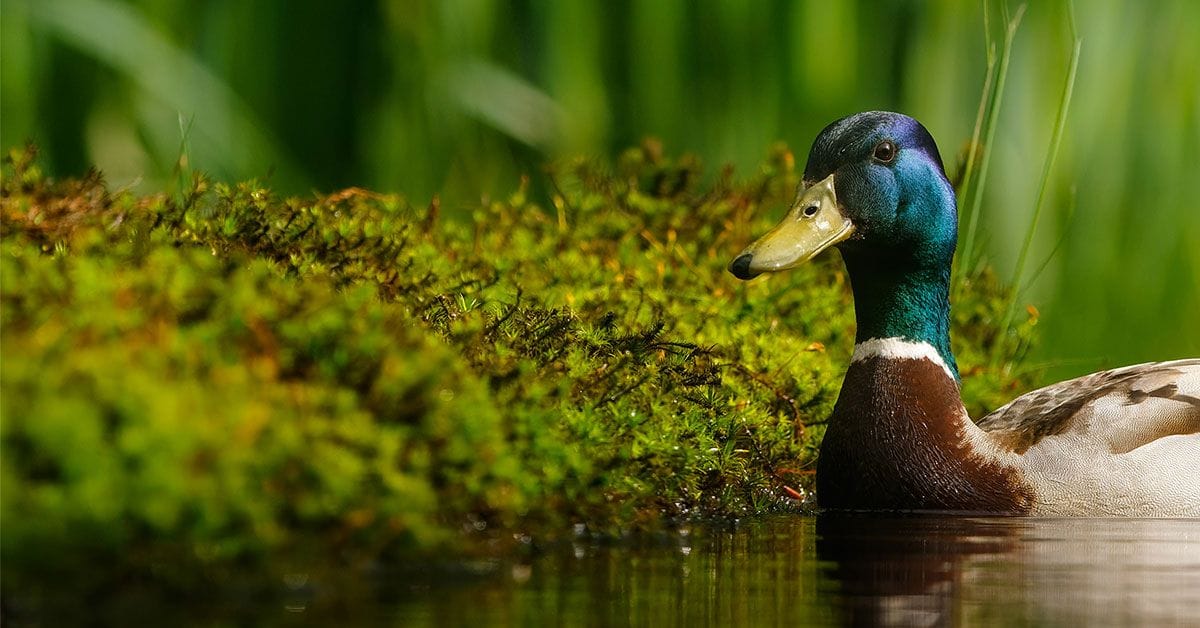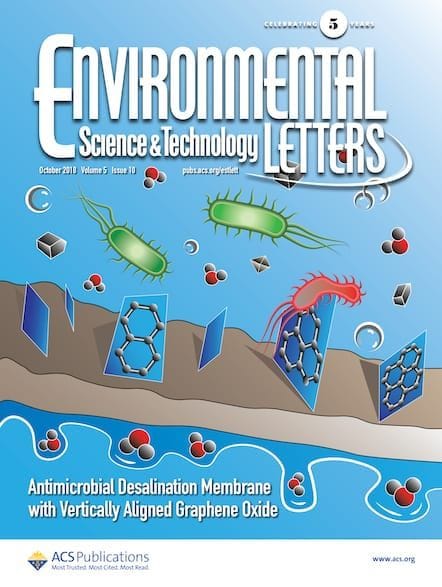There is a current knowledge gap around detecting avian influenza viruses in wild aquatic birds and marine environments. A recent study explores new methods for analyzing surface water to better pinpoint contaminant sources.

Avian influenza viruses (AIV) infect both wild and domestic birds. Wild aquatic birds—especially ducks—are considered hosts, carrying AIV in their intestines and respiratory tracts without suffering any sickness. But shed virus can contaminate other species, including commercial poultry.
Depending on the strain, AIV manifests a spectrum of impacts, ranging from mild afflictions such as disheveled plumage and diminished egg production, to severe and fatal outcomes, particularly in cases involving high-pathogenicity strains (HPAI). Notably, some of these virulent strains can lead to a mortality rate of 100% within a mere 48-hour period.1 When outbreaks occur, the policy is often a complete cull of all infected and healthy poultry, with heavy economic losses for farmers.2
AIV does not normally infect humans, but some sporadic crossover infections have been reported—specifically for viruses H5, H7, and H9—and the World Health Organization states that outbreaks pose an ongoing risk to humans.3
With this in mind, various global health organizations are urging countries to work together across sectors to save as many animals as possible and to protect people. But this requires surveillance—and while there are fears that outbreaks on farms could contaminate nearby pools or groundwater,4 AIV concentrations in surface water are often too low to be detected by most methods.
A recent article in Environmental Science & Technology Letters explores attempts to design an optimized method to temporally sample and analyze surface water from wetlands and lakes near confirmed HPAI in wild birds or poultry operations.5 Sample collection and processing included filtration, filter elution, two rounds of centrifugation, egg inoculation to isolate the virus, and finally extraction and RNA isolation. Detection rates were significantly higher with this method than simply testing for viral RNA using standard diagnostic protocols: 66.7% compared to just 11.1%.
Notably, sequence analysis showed one sample was B2.1, the predominant genotype that was circulating in wildlife in the upper Midwest United States in Spring 2022. This is the first report of infectious HPAI being isolated from a body of water in the U.S., with implications for human and wildlife health, virus surveillance, and outbreak management.
Interestingly, when the same sites were sampled five weeks later, AIV was not isolated. This may be due to multiple factors, including UV penetration, biotic effects, viral aggregation, sequestration, or deposition. There was above-average rainfall and higher than normal air temperature in the week preceding the second sampling, which likely affected viral persistence in the water. It could also have been affected by natural migratory patterns, with birds beginning to leave, and therefore lower levels of feces in the water.
The team behind the research say improved RNA detection techniques are necessary to reduce the risk of false negatives. The results also suggest that surface water could be a medium for AIV transmission, including HPAI. This is perhaps not surprising, since previous work has shown that poultry viruses find their way into wells and lagoons in the vicinity of farms.4
In fact, although they are regulated, process wastewaters are an under-investigated environmental contaminant source—whether from farms or other commercial facilities. Despite 48% of wastewater from these locations being disinfected prior to discharge, studies found antibiotic-resistant bacteria and multiple bacterial groups in all samples.6 This is in addition to the multitude of other contaminants that find their way into water sources. Sampling has documented substantial and varying organic-chemical contribution to surface water from effluent discharges (including disinfection byproducts, prescription pharmaceuticals, and industrial or household chemicals) to the cocktail of molecules that end up in urban stormwater and agricultural runoff.7
As well as understanding how pathogens such as AVI move through the environment, the global demand for safe and sustainable water supplies necessitates a better understanding of contaminant exposures in natural waterbodies, and potential reuse waters.
References
- Centers for Disease Control and Prevention (CDC). Information on Bird Flu. October 16, 2023.
- World Organisation for Animal Health (WOAH). Avian Influenza. 2023.
- World Health Organization (WHO). Ongoing avian influenza outbreaks in animals pose risk to humans. July 12, 2023.
- Borchardt, M. A. et al. Avian Influenza Virus RNA in Groundwater Wells Supplying Poultry Farms Affected by the 2015 Influenza Outbreak. Environ. Sci. Technol. Lett. 2017, 4, 7, 268–272.
- Hubbard, L. E. et al. Environmental Surveillance and Detection of Infectious Highly Pathogenic Avian Influenza Virus in Iowa Wetlands. Environ. Sci. Technol. Lett. 2023, 10, 12, 1181–1187.
- Hubbard, L. E. et al. Food, Beverage, and Feedstock Processing Facility Wastewater: a Unique and Underappreciated Source of Contaminants to U.S. Streams. Environ. Sci. Technol. 2022, 56, 2, 1028–1040.
- Masoner, J. R. et al. Contaminant Exposure and Transport from Three Potential Reuse Waters within a Single Watershed. Environ. Sci. Technol. 2023, 57, 3, 1353–1365.
